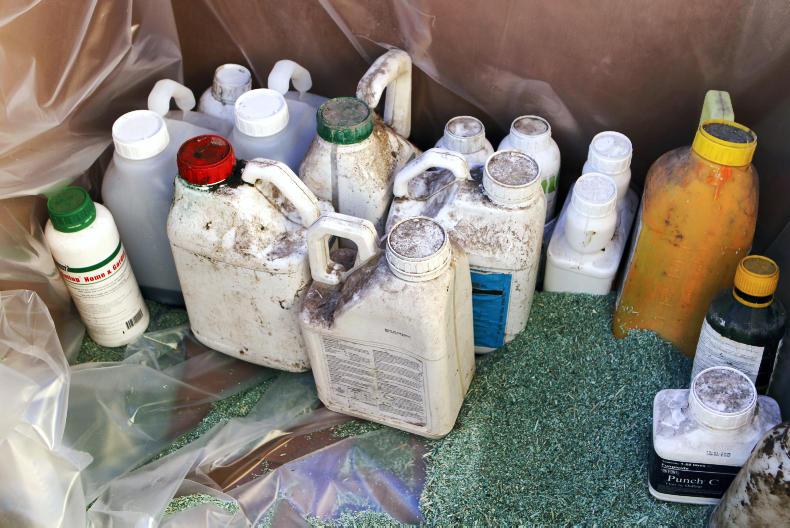The Farm Hazardous Waste Collection Scheme has been a successful initiative in recent years and it will be available at 10 sites again this autumn. The scheme is funded by the Environmental Protection Agency (EPA), the Department of Communications, Climate Action & Environment, the Department of Agriculture, Food and the Marine and Teagasc. And it has been made possible through the support of the stakeholder bodies.
The significant assistance provided by the environmental departments in the local authorities is highly acknowledged in this continuing success. However, it was farmers who ensured previous successes by taking a range of listed hazardous products from their stores for safe disposal. Such products have accumulated on many farms over the years and, in some cases, over a generation.
The scheme has been operated over the past four years and has provided 36 sites to enable farmers to hand over designated hazardous waste products. During this period, just under 7,000 farmers disposed of around 800t of what is now described as hazardous waste from Irish farms. These are products that are either waste or were cleared for use many years ago but can no longer be used legally in agriculture.
Dates and locations of the 10 sites for autumn 2017 are shown in Table 1. The EPA and other stakeholders hope that the volume of hazardous waste handed in to these collection sites continues to increase, as has occurred since 2013.
EPA senior scientific officer Dr Shane Colgan commented: “The EPA is pleased to support this scheme again in 2017. The safe disposal of these hazardous substances significantly reduces the risk of damage to our plants, wildlife and water. In doing this it also protects the health of farm families and their neighbours.”
From a farmer’s perspective, Teagasc’s environmental specialist Tim Hyde said: “This initiative is an excellent opportunity for farmers to safely dispose of their farm hazardous waste at an extremely competitive rate. These collection days provide opportunities for farmers to dispose of materials which could cause problems in DAFM cross-compliance or Bord Bia inspections.”
Different waste streams must be kept separate for disposal. The four waste categories are:
Some waste streams are free – these include waste oils, electrical goods and batteries. There is a €2/kg charge for things like pesticides, veterinary medicines, doses, dips, wormers, dry cow and mastitis tubes, needles and syringes, waste paints, aerosols, corrosives, oil and air filters, oily wastes, brake fluids, brake pads, antifreeze, adhesives, coolants, grease cartridges and creosote.
Empty metal and plastic containers will be charged at the rate of €4/kg.
Collection centres will operate between 9.30am and 3.30pm. Payment for waste disposal must be made on the day. This can be done using cash, cheque or credit card. An official receipt will be issued to certify the transfer of control for the different waste materials.
